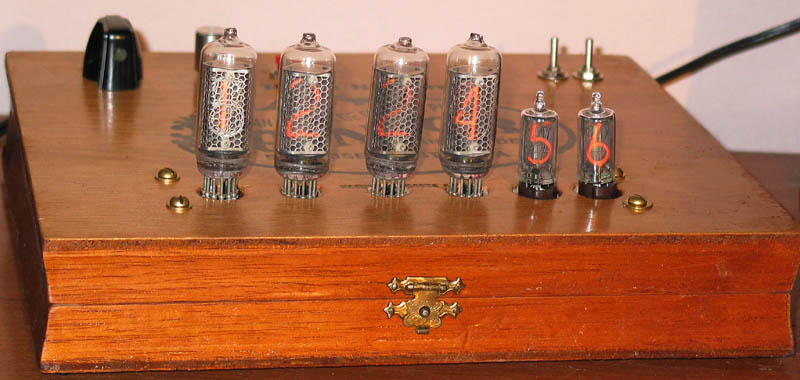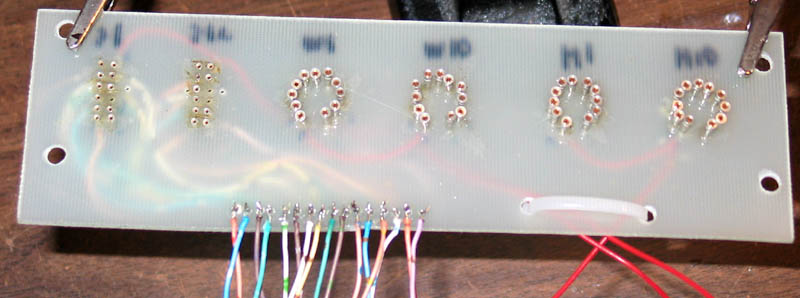
A friend asked me to make a nixie clock for him. I put one together, as shown below. This one has the usual features - DS2khz clock source (accurate to 1 minute per year), supercap real time clock backup, chimes using captured sound, a rotary encoder for setting the time. I used Soviet IN-8 medium digit (5/8 inch) nixies for the hours and minutes, and Burroughs B5870-equivalent (1/2 inch) nixies for the seconds.

For this clock, I experimented with creating a homemade socket board. I measured the IN-8s and created a template for the socket board using a CAD program. I experimented until I got a perfect fit for the IN-8 footprint. I made a small mistake for the Burroughs nixies. I assumed that the pins fit a standard .1 inch grid, but actually they are .09 inches apart. The Burroughs pins are flexible so it wasn't a serious problem, just harder to mount the tubes in their sockets.
I used small pin receptacles for the Burroughs but didn't have any larger pin receptackes for the IN-8s on hand. I noticed that some machine pins that I had lying around seemed to fit the IN-8 pins well. I fit them loosely into PCB to avoid stressing the tube pins. It worked out fairly well, even givint the hour and minutes digits a bit more height over the seconds digits. The only problem is that the machine pins don't fit as well as I had thought. While the tubes are tight in their sockets, they can be knocked out fairly readily. On the other hand, it should be possible to replace a burned out tube with either an IN-8 or an IN-8-2.
I prefer direct drive with the drive electronics on the same board as the socket. the PCB for the socket doesn't have any pre-drilled holes, so I had to put the drive electronics on a different board. To keep the wiring manageable, I use 3-way multiplexing. For a previous clock I had problems with ghosting, but for this clock I managed to eliminate the ghost images by turning off the anode drivers for 125 microseconds. The cycle time is 6 milliseconds, eliminating flicker, and the deat time is only about 6% of the total.
